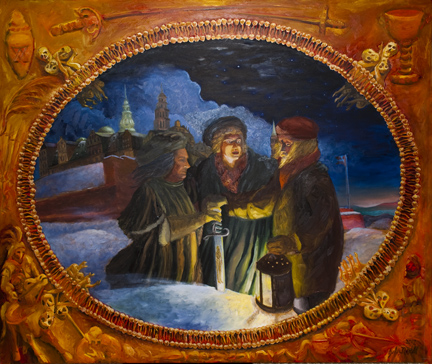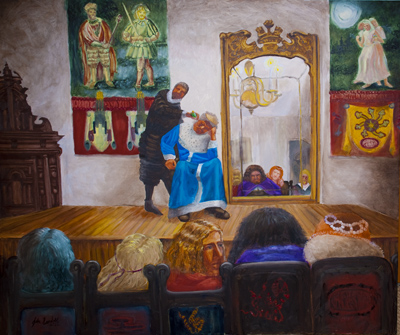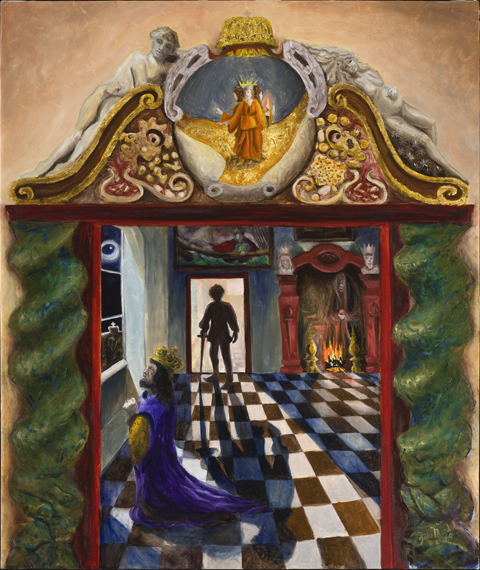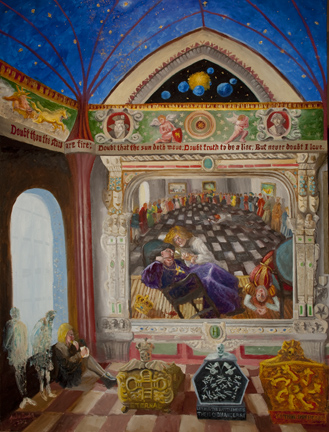

 View Portfolio |
 Inside Time |
 Shows |
 About/Contact the Artist |
Shakespeare: The Mirror up to ScienceTo see larger versions of these paintings, click here.
An article just came out about these paintings in the
Interdisciplinary Literary Studies
journal published by Penn State University Press.
Hamlet, Art, and Apoptosis: The Shakespearean Artwork of Julie Newdoll
Marcia Eppich-Harris
Interdisciplinary Literary Studies
Vol. 17, No. 4 (2015), pp. 540-558Write julie (at) brushwithscience.com for information on purchasing limited edition prints, posters, or originals, or any other questions.
.
Message Delivered - 32" x 38" Julie Newdoll 2009. |
The Mousetrap / Testing Inside and Out - 32" x 38" Julie Newdoll 2009. |
Breaking Down - 32" x 38" Julie Newdoll 2009. |
The Coffins - 32" x 38" Julie Newdoll 2009. |
The Commitment - oil on canvas, 32" x 38", 2009.
"The Commitment," depicts the moment Hamlet sees King Claudius on his knees, seeming to pray. Here Hamlet and Claudius are shown in "a room in the castle," as the stage directions dictate, with both men reflecting on their decisions and their futures. In this scene, Hamlet makes a commitment to his revenge that we have heretofore not seen. He does not kill the King at this moment, but he has made up his mind to do it – at a time when Claudius is not likely to be sent directly to heaven. In his commitment to revenge, however, Hamlet must also resign himself to the revenge hero’s certain fate – death.
Cells must sometimes accept death for the good of the organism, and one means of accomplishing this task is via a pre-programmed system that exists in our cells called Apoptosis. This program is switched on when death of the cell is necessary for the fulfillment of a larger purpose. Cells often die during a person's life, such as in developmental stages. For instance, we all have webbed fingers in the womb and eventually the tissue between the fingers must be eliminated. When it is time for a cell to die, it gets a signal in the form of a small molecule that attaches to the outside of the cell. The cell does not die right away, however. The process begins, but checks are done to assure that destruction is necessary. At some point, the cell must "commit" to destruction. Via a built-in genetic program called Apoptosis, the DNA starts to be destroyed – chopped up – and holes are punched in the mitochondria, "popping" them. The nucleus begins to degrade – into a crescent shape at first – and the cell starts turning into spherical packets of cellular debris. In the painting, the process of Apoptosis is depicted above the doorframe, beneath the sculpted bodies of Hamlet and Ophelia. The supporting columns, which are crumbling at the bottom, indicate the destruction of the cell’s DNA. Like Hamlet, once the cell commits to self-destruction, it has passed a point of no return.
“The Commitment” strives to symbolically link Apoptosis (and the cell’s commitment to self-destruction) to Hamlet's commitment to seek revenge, which ultimately will destroy him.
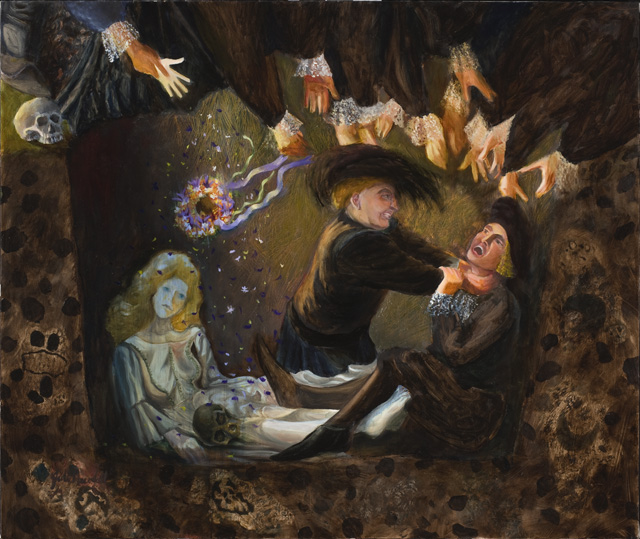 |
|
|
|
| Concept thoughts - VERY ROUGH first passes, a history in progress.
Mousetrap - The Test |
|
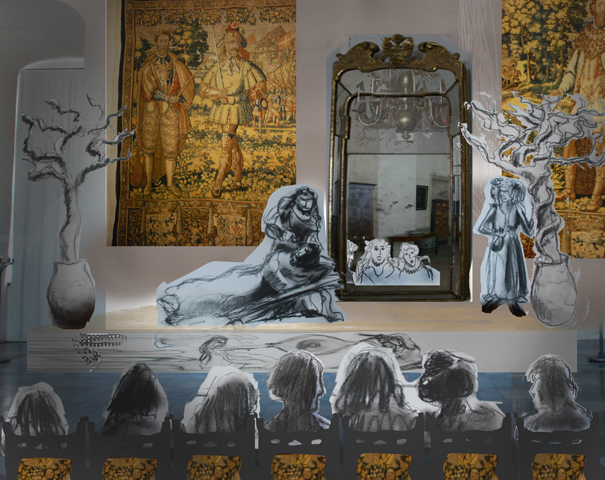 |
|
| Swear - the Message | |
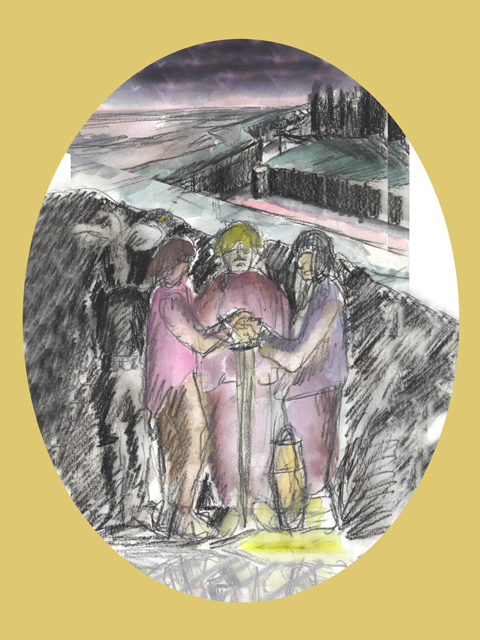 |
|
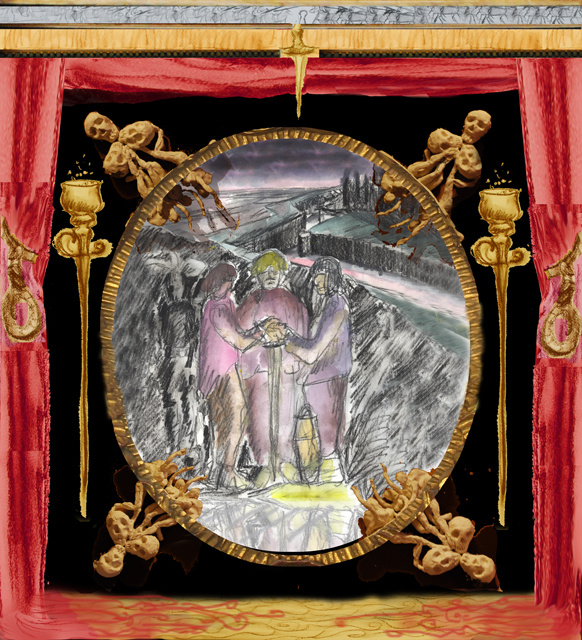 |
|
| Ophelia's Funeral - the downward spiral | |
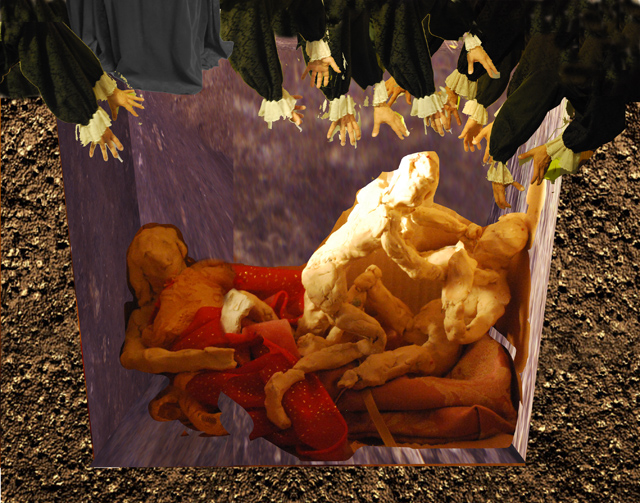 |
|
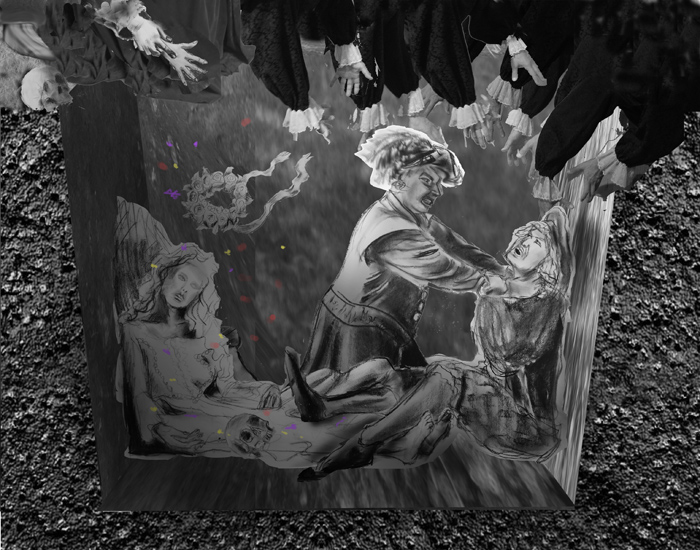 |
|
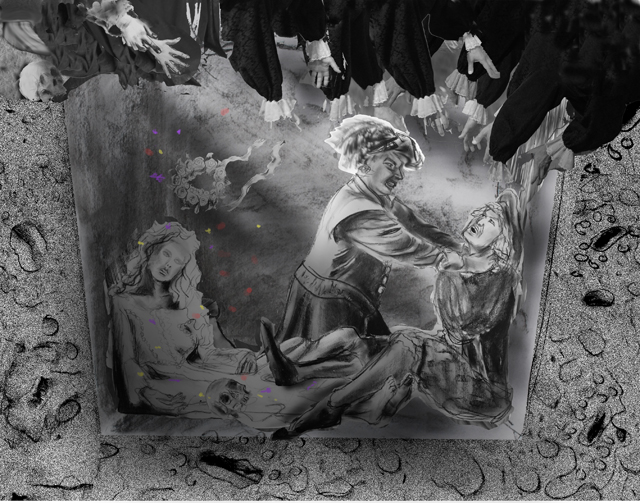 |
|
| The End - Coffins and Painting of final scene | |
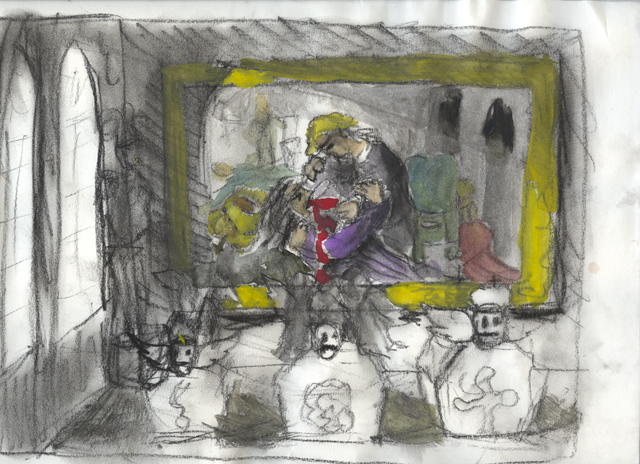 |
|
|
